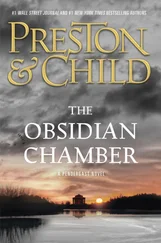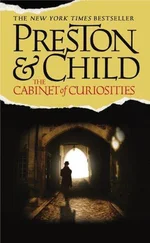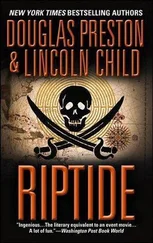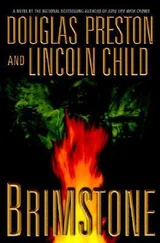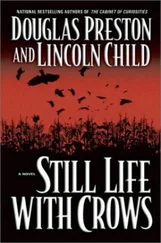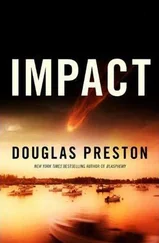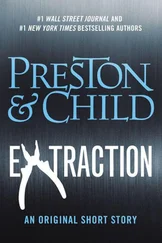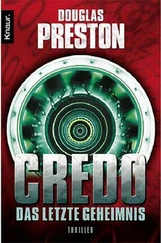“Good morning, Gideon.” He grasped his hand, giving it a warm, brief shake. “Have a seat.”
Gideon, who had stood up when the doctor entered, sat down again. The doctor remained standing.
“I have here the results of the cranial MRI we performed seven days ago.”
From the tone in the neurologist’s voice, Gideon knew immediately what the man was going to say. He felt himself in the grip of a fight-or-flight reaction, his heart pounding, his blood racing, his muscles tensing up. He struggled to calm his body.
Dr. Metcalfe paused, then eased himself down onto a corner of the table. “The results of the test show a growth of blood vessels in the brain we call an AVM, or arteriovenous malformation—”
Gideon rose abruptly. “That’s it. That’s all I needed to know. Thank you.” He started for the door but was arrested by the doctor, who placed a gentle hand on Gideon’s arm to steady him.
“I gather, then, that I’m your second opinion and you already knew about this?”
“Yes,” said Gideon. He wanted nothing more than to head for the door.
“Very well. I believe, however, you could benefit from hearing what I have to say, if you’re willing to listen.”
Gideon remained standing. With effort, he overcame his impulse to run. “Just say it then. Don’t dress it up. And spare me the expressions of sympathy.”
“Very well. Your AVM involves the great cerebral vein of Galen and it is both congenital and inoperable. This type of malformation tends to grow with time, and the indications are that yours is growing. An abnormal, direct connection between the high-pressure artery and the low-pressure vein is causing the steady dilation of the vein and enlargement of the AVM in general. In addition, part of the AVM involves a venous anomaly downstream, which appears to be constricting blood flow, leading to further dilation of the vein.”
He paused. “Are my descriptions too technical?”
“No,” said Gideon. In a way, the technical terminology removed some of the horror. Even so, the idea that this was going on in his brain made him sick.
“The prognosis is not good. I would estimate you have six months to two years to live—with the most probable mortality rate being somewhere around a year or slightly less. On the other hand, the annals of medical history are sprinkled with miracles. No one can say for sure what the future will bring.”
“But the survival rate after, say, five years is…what?”
“Vanishingly small. But not zero.” The doctor hesitated. “There is a way for us to know more.”
“I’m not sure I want to know more.”
“Understandable. But there’s a procedure known as a cerebral angiography, which would tell us a great deal more about your situation. We insert a catheter into the femoral artery in the groin area and thread it up to the carotid artery in the neck. There we release a dye, or blocking agent. As it spreads through the brain, we take a series of radiographs. This allows us to map the AVM. It would tell us more accurately how much time you have…and, perhaps, show us how we might ameliorate it.”
“Ameliorate it? How?”
“Through surgery. We can’t take out the AVM, but there are other surgical options. One can work around the edges, so to speak.”
“Which would do what?”
“Possibly prolong your life.”
“By how much?”
“It depends on how fast the vein is dilating. A few months, perhaps a year.”
This led to a long silence.
“These procedures,” Gideon said at last. “Are there risks?”
“Significant risks. Particularly neurological. Operations like this have a ten to fifteen percent mortality rate, and an additional forty percent possibility of causing damage to the brain.”
Gideon looked the doctor in the eye. “Would you take those risks in my position?”
“No,” the doctor said without hesitation. “I wouldn’t want to live if my brain were compromised. I am not a gambler, and fifty-fifty odds are not attractive to me.” The neurologist returned Gideon’s gaze, his large brown eyes full of compassion. Gideon realized he was in the presence of a wise man, one of the few he had met in his short and relatively unhappy life.
“I don’t think the angiogram will be necessary,” Gideon said.
“I understand.”
“Is there anything I have to do in the meantime, any way I should alter my life?”
“Nothing. You can live a normal, active life. The end, when it comes, will probably be abrupt.” The doctor paused. “This isn’t really medical advice. But if I were you, I’d do the things that are really important to you. If it involves helping others, so much the better.”
“Thank you.”
The doctor gave his shoulder a squeeze and dropped his voice. “The only difference between you and the rest of us is that, while life is short for everyone, for you it’s just a bit shorter.”
Gideon turned off North Guadalupe Street, driving the Suburban through the ancient Spanish gate and onto the groomed white gravel entryway of the Santa Fe National Cemetery. A dozen or so cars were parked before the Administration Building and he pulled in beside them, then exited the vehicle and glanced around. It was a warm summer morning, the Sangre de Cristo Mountains dark green against a porcelain sky. The orderly rows of small white tombstones stretched ahead of him, running from the shade into brilliant light.
He walked east, his shoes crunching on the gravel. This was the older part of the cemetery—originally built for the Union soldiers who died in the Battle of Glorieta Pass—but he could see, through the pines and cedars, the distant newer section, climbing the low flanks of the nearby ridge, where the desert had been newly covered with turf and transformed into Technicolor green. Partway up the hill, he could make out a small group of people gathering around an open grave.
He gazed over the neatly ordered files of white crosses and stars of David. Before long, I’ll be in a place like this, and people will be gathering around my grave. This unexpected and unwanted thought was quickly followed by another, dreadful yet irresistible: Who will come to mourn me?
He turned up the path that led toward the group of mourners.
The details of Simon Blaine’s involvement in the terrorist plot had been kept out of the papers. Gideon had expected to see a much larger crowd at his burial. He had been, after all, a well-known and well-regarded novelist. But as Gideon made his way through the severe white rows, he realized there were no more than two dozen people circled around the open grave. As he approached, he could make out the voice of the priest, intoning the older, formal Episcopal version of the Burial of the Dead:
Give rest, O Christ, to thy servant with thy saints,
where sorrow and pain are no more,
neither sighing, but life everlasting.
He moved forward, stepping out of the shade of the trees and into brilliant sunlight. His eyes searched the crowd and found Alida. She was dressed in a simple black dress, with a veiled hat and white elbow-length gloves. He took an unobtrusive place at the back fringe of the group and surreptitiously studied her face across the grave. The veil was pinned back across the hat. As she stared down at the coffin, her eyes were dry but her face looked ravaged and utterly desolate. His own eyes remained on her face, unable to look away. Suddenly her gaze flickered up and met his for one terrible second. Then she looked back down, into the grave.
What was that look? He tried to parse it. Was there any feeling there? It had been too quick, and now she resolutely refused to raise her head again.
Into thy hands, O merciful Savior, we commend thy servant Simon…
Читать дальше

